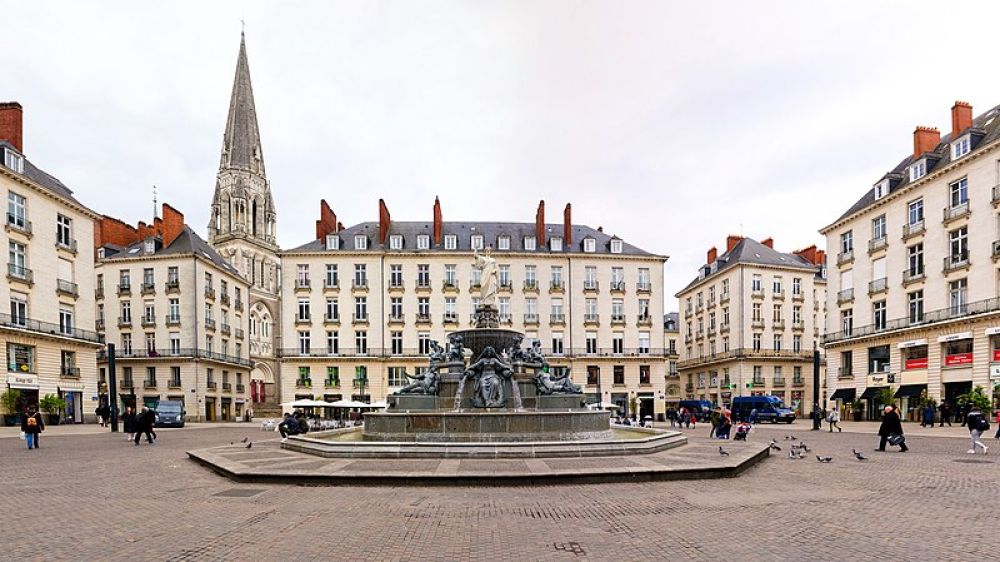

Place Royale is located in the heart of Nantes, a city that has been a significant hub in Western France since Roman times. The history of tourism in Nantes, and particularly at Place Royale, is intrinsically linked to the city's illustrious past and cultural development. While the square itself was constructed in the 18th century, Nantes has been drawing visitors for much longer due to its historical significance and the wealth of attractions.
The square was designed by architect Mathurin Crucy and completed in 1790. It quickly became a focal point for the city, encapsulating the grandeur and elegance of the time. With the statue of Louis XVI that was erected (and later replaced by a fountain), the Place Royale also became a symbol of the city's regal connections.
Industrial Revolution to Belle Époque: In the 19th century, the industrial revolution boosted Nantes' economy, resulting in increased travel to the city by businessmen and visitors intrigued by its industry. During this period, Nantes showcased its cultural flair, which continued to attract tourists. The Belle Époque era further highlighted Nantes as a place of interest for the burgeoning leisure tourism market.
20th Century Wars: The two world wars in the 20th century had an impact on tourism as they did across Europe. Post-WWII, the city rebuilt and refreshed many of its tourist attractions. The restoration of Place Royale was part of this effort to reinvigorate Nantes as a tourist destination.
Late 20th Century to Present: In recent decades, Nantes has put considerable effort into promoting its historical and cultural heritage. Place Royale, surrounded by neoclassical buildings, quaint shops, and inviting cafes, has played a significant role in the city's tourism strategy. With the advent of the high-speed TGV train connecting Nantes to Paris, the city has seen an influx of tourists looking to discover the charms of the Loire region.
As of the current time, there has been an increasing attention towards "experience-based" tourism. Visitors are no longer satisfied with simply observing; they want to immerse themselves in the local culture and history. To cater to this trend:
With its rich history and willingness to embrace new trends, Place Royale in Nantes continues to stand as a premier destination that both celebrates its past and looks forward to the future of tourism.